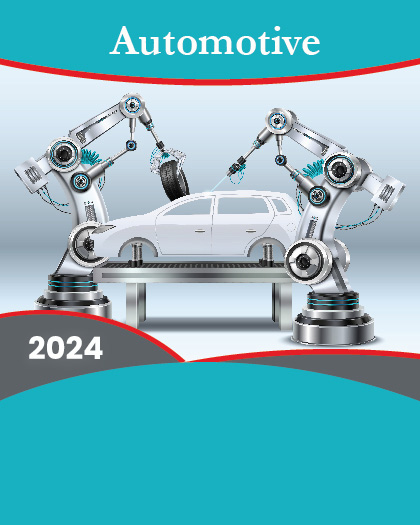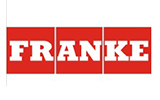Table of Contents
Chapter 1. Global Automotive Electric HVAC Compressor Market Executive Summary
1.1. Global Automotive Electric HVAC Compressor Market Size & Forecast (2025-2033)
1.2. Regional Summary
1.3. Segmental Summary
1.3.1. By Cooling Capacity
1.3.2. By Product
1.3.3. By Vehicle
1.3.4. By Drivetrain
1.4. Key Trends
1.5. Recession Impact
1.6. Analyst Recommendation & Conclusion
Chapter 2. Global Automotive Electric HVAC Compressor Market Definition and Research Assumptions
2.1. Research Objective
2.2. Market Definition
2.3. Research Assumptions
2.3.1. Inclusion & Exclusion
2.3.2. Limitations
2.3.3. Supply Side Analysis
2.3.3.1. Availability
2.3.3.2. Infrastructure
2.3.3.3. Regulatory Environment
2.3.3.4. Market Competition
2.3.3.5. Economic Viability (Consumer's Perspective)
2.3.4. Demand Side Analysis
2.3.4.1. Regulatory Frameworks
2.3.4.2. Technological Advancements
2.3.4.3. Environmental Considerations
2.3.4.4. Consumer Awareness & Acceptance
2.4. Estimation Methodology
2.5. Years Considered for the Study
2.6. Currency Conversion Rates
Chapter 3. Global Automotive Electric HVAC Compressor Market Dynamics
3.1. Market Drivers
3.1.1. Rapid Expansion of the EV Industry and Rising Demand for Energy Efficient Components
3.1.2. Technological Advancements in Compressor Design and Manufacturing
3.1.3. Government Initiatives and Stringent Emission Regulations
3.2. Market Challenges
3.2.1. High Initial Capital Expenditure and Fluctuating Raw Material Costs
3.2.2. Integration Complexities and Evolving Technical Standards
3.3. Market Opportunities
3.3.1. Adoption of Advanced Cooling Capacities and Next-Generation Products
3.3.2. Expansion in Emerging Markets and Increased Investment in EV Infrastructure
3.3.3. Strategic Collaborations and R&D Enhancements
Chapter 4. Global Automotive Electric HVAC Compressor Market Industry Analysis
4.1. Porter's 5 Force Model
4.1.1. Bargaining Power of Suppliers
4.1.2. Bargaining Power of Buyers
4.1.3. Threat of New Entrants
4.1.4. Threat of Substitutes
4.1.5. Competitive Rivalry
4.1.6. Futuristic Approach to Porter's 5 Force Model
4.1.7. Porter's 5 Force Impact Analysis
4.2. PESTEL Analysis
4.2.1. Political
4.2.2. Economical
4.2.3. Social
4.2.4. Technological
4.2.5. Environmental
4.2.6. Legal
4.3. Top Investment Opportunities
4.4. Top Winning Strategies
4.5. Disruptive Trends
4.6. Industry Expert Perspective
4.7. Analyst Recommendation & Conclusion
Chapter 5. Global Automotive Electric HVAC Compressor Market Size & Forecasts by Cooling Capacity 2025-2033
5.1. Segment Dashboard
5.2. Global Automotive Electric HVAC Compressor Market: Cooling Capacity Revenue Trend Analysis, 2022 & 2032 (USD Million/Billion)
5.2.1. <20 kW
5.2.2. 20-40 kW
5.2.3. >40 kW
Chapter 6. Global Automotive Electric HVAC Compressor Market Size & Forecasts by Product 2025-2033
6.1. Segment Dashboard
6.2. Global Automotive Electric HVAC Compressor Market: Product Revenue Trend Analysis, 2022 & 2032 (USD Million/Billion)
6.2.1. Scroll
6.2.2. Rotary
6.2.3. Screw
Chapter 7. Global Automotive Electric HVAC Compressor Market Size & Forecasts by Vehicle 2025-2033
7.1. Segment Dashboard
7.2. Global Automotive Electric HVAC Compressor Market: Vehicle Revenue Trend Analysis, 2022 & 2032 (USD Million/Billion)
7.2.1. Passenger Cars
7.2.2. Commercial Vehicles
Chapter 8. Global Automotive Electric HVAC Compressor Market Size & Forecasts by Drivetrain 2025-2033
8.1. Segment Dashboard
8.2. Global Automotive Electric HVAC Compressor Market: Drivetrain Revenue Trend Analysis, 2022 & 2032 (USD Million/Billion)
8.2.1. PHEV
8.2.2. BEV
8.2.3. HEV
Chapter 9. Global Automotive Electric HVAC Compressor Market by Region 2025-2033
9.1. North America Automotive Electric HVAC Compressor Market
9.1.1. U.S. Automotive Electric HVAC Compressor Market
9.1.1.1. Cooling Capacity/Product/Vehicle Breakdown & Forecasts, 2025-2033
9.1.2. Canada Automotive Electric HVAC Compressor Market
9.2. Europe Automotive Electric HVAC Compressor Market
9.2.1. U.K. Automotive Electric HVAC Compressor Market
9.2.2. Germany Automotive Electric HVAC Compressor Market
9.2.3. France Automotive Electric HVAC Compressor Market
9.2.4. Spain Automotive Electric HVAC Compressor Market
9.2.5. Italy Automotive Electric HVAC Compressor Market
9.2.6. Rest of Europe Automotive Electric HVAC Compressor Market
9.3. Asia-Pacific Automotive Electric HVAC Compressor Market
9.3.1. China Automotive Electric HVAC Compressor Market
9.3.2. India Automotive Electric HVAC Compressor Market
9.3.3. Japan Automotive Electric HVAC Compressor Market
9.3.4. South Korea Automotive Electric HVAC Compressor Market
9.3.5. Rest of Asia-Pacific Automotive Electric HVAC Compressor Market
9.4. Latin America Automotive Electric HVAC Compressor Market
9.4.1. Brazil Automotive Electric HVAC Compressor Market
9.4.2. Mexico Automotive Electric HVAC Compressor Market
9.4.3. Rest of Latin America Automotive Electric HVAC Compressor Market
9.5. Middle East & Africa Automotive Electric HVAC Compressor Market
9.5.1. Saudi Arabia Automotive Electric HVAC Compressor Market
9.5.2. South Africa Automotive Electric HVAC Compressor Market
9.5.3. Rest of Middle East & Africa Automotive Electric HVAC Compressor Market
Chapter 10. Competitive Intelligence
10.1. Key Company SWOT Analysis
10.1.1. Company 1
10.1.2. Company 2
10.1.3. Company 3
10.2. Top Market Strategies
10.3. Company Profiles
10.3.1. Company 1
10.3.1.1. Key Information
10.3.1.2. Overview
10.3.1.3. Financial (Subject to Data Availability)
10.3.1.4. Product Summary
10.3.1.5. Market Strategies
10.3.2. Company 2
10.3.3. Company 3
10.3.4. Company 4
10.3.5. Company 5
10.3.6. Company 6
10.3.7. Company 7
10.3.8. Company 8
10.3.9. Company 9
10.3.10. Company 10
Chapter 11. Research Process
11.1. Research Process
11.1.1. Data Mining
11.1.2. Analysis
11.1.3. Market Estimation
11.1.4. Validation
11.1.5. Publishing
11.2. Research Attributes























